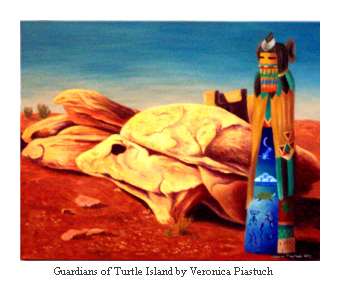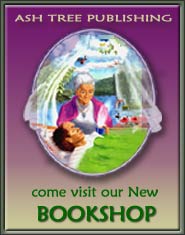Which is better: cooked food or raw? Taking nothing for granted
or gospel, I set out to find out for myself the answer to
this important question.
First, I asked, what is meant by "raw food" and
what is meant by "cooked food?" One cannot simply
say that raw is uncooked, for there are raw food "cookbooks."
Nor is cooking simply the application of heat through boiling,
baking, or frying, as I soon discovered. Ripening itself is
one form of natural cooking; others are described later.
Second, I wondered, what did my ancestors eat? And was it
raw or cooked?
Third, I questioned, how do enzymes in foods affect digestion
and health?
And fourth, I attempted to sum it up, is there an advantage
to cooking?

The answers weren't as simple as one might suspect, however.
The answers to these questions combine in interesting ways,
and open up other questions in their answering.
To begin with the second question: Our most primitive ancestors,
those who lived several million years ago, most likely ate
raw food. The majority of what they ate was animal protein:
muscle meats, organ meats, eggs, and insects.
Present day examples of peoples who primarily eat raw animal
protein include the Inuit of the far North and the Masai of
Africa. Both groups are known for their health and freedom
from disease.
 Research
done by Dr. Pottenger in the mid-twentieth century revealed
that raw meat and milk contained enzymes necessary for digestion.
He showed that heat deactivated their enzymes (www.westonaprice.org).
His conclusion was that raw meat, fish, milk and eggs provide
more nutrients and are more easily digested.
Research
done by Dr. Pottenger in the mid-twentieth century revealed
that raw meat and milk contained enzymes necessary for digestion.
He showed that heat deactivated their enzymes (www.westonaprice.org).
His conclusion was that raw meat, fish, milk and eggs provide
more nutrients and are more easily digested.
This is not true of plant foods, however. Vegetables and
fruits do contain enzymes -- if picked fully ripe -- but their
enzymes have no function in their own digestion, although
papaya, pineapple, and kiwi fruit contain enzymes that digest
meat (An interesting aside – these fruits are tropical
fruits that help digest and destroy, in the digestive systems
of people and animals, the parasites that are found in those
regions, and only incidentally digest other kinds of meat).
Many plant enzymes interfere with digestion, so our bodies
destroy them.
Cooked food was the preference of most of our ancestors.
Archaeologists have found evidence of fire in sites occupied
by hominids as far back as a million years ago, but cannot
say exactly when we began to use fire to cook food.
Certainly by about ten thousand years ago, when cultivation
of grains and beans -- hard foods which absolutely require
cooking -- became widespread, our ancestors were regularly
and routinely cooking their food.
Most current aboriginal people also cook their food; in New
Zealand, for instance, I found the Maori jealously guarding
natural hot pools used to cook their food.
Is there an advantage to cooking? It depends on how we cook
– or, more basically, how we define cooking –
and whether we are eating animals or plants. Animal cells
are surrounded by a membrane. This thin membrane is easily
dissolved by digestive juices, releasing the nutrients stored
in the cell. Fast, high-heat cooking will toughen these membranes,
thus slowing digestion and impairing nutrient uptake.
 For
an illustration of this, think of how tough an overcooked
piece of meat can become; chewing, an important part of digestion,
is much more difficult. Slow, low-heat cooking dissolves the
membrane, making digestion and nutrient uptake much easier.
If the idea of raw meat turns your stomach, eat soups and
stews instead.
For
an illustration of this, think of how tough an overcooked
piece of meat can become; chewing, an important part of digestion,
is much more difficult. Slow, low-heat cooking dissolves the
membrane, making digestion and nutrient uptake much easier.
If the idea of raw meat turns your stomach, eat soups and
stews instead.
Plant cells are surrounded by a wall. This wall is designed
to resist breakage and to protect the stored nutrition in
plant cells. Digestive juices act on the cell walls of plants
little if at all; take a look in the toilet the day after
next time you eat corn on the cob to see how true this is.
Cooking, which can be expanded to include her sisters freezing,
drying, sprouting, fermenting, and preserving in oil, breaks
the cell wall and is necessary to liberate nutrients from
plant cells. Cooked vegetables and fruits, grains, and beans
provide more nutrients and are more easily digested than raw
ones.
A Haiku verse that could sum this up is:
Chewing what is raw,
how can one smile?
Muscles of the jaw too tense.
A macrobiotic diet, the only vegetarian diet shown to put
cancer in remission, consists of cooked food exclusively.
Around the world, well-cooked meat broths -- think chicken
soup -- are the food of choice for convalescents.
Cooked plants are far more nourishing than raw plants, whether
we look at vegetables, fruits, nuts, grains, or pulses (beans).
Cooking not only breaks the cell wall, liberating minerals
to our bodies, it actually enhances and activates many vitamins.
This is true especially of the carotenes, used to make vitamin
A, and other antioxidants in plants. Research found that the
longer the corn is cooked and the hotter the temperature,
the greater the amount of antioxidants in the corn.
This also applies to vitamin C. A baked potato contains far
more vitamin C than a raw potato. And sauerkraut (cabbage
cooked by fermentation) contains up to ten times as much vitamin
C as raw cabbage.
Some vitamins do leach into cooking water. Cooking with
little or no water (for instance, steaming or braising) reduces
vitamin loss in vegetables such as broccoli from 97% to 11%.
Note, however, that the vitamins aren't lost or destroyed,
but merely transferred to the cooking water. Using that water
for soup stock, or drinking it, insures that you ingest all
the nutrients, and in a highly absorbable form.
 Transferring
nutrients into water, such as by making nourishing herbal
infusions and healing soups, and then ingesting them is far
more effective, in my experience, than wheat grass juice,
green drinks, or any kind of nutritional supplement. It is,
in fact, one of the best ways to optimally nourish oneself
that I have found in three decades of paying attention to
health.
Transferring
nutrients into water, such as by making nourishing herbal
infusions and healing soups, and then ingesting them is far
more effective, in my experience, than wheat grass juice,
green drinks, or any kind of nutritional supplement. It is,
in fact, one of the best ways to optimally nourish oneself
that I have found in three decades of paying attention to
health.
Even if some vitamins are lost in cooking, people absorb
more of what is there from cooked foods. Several recent studies
measured vitamin levels in the blood after eating raw and
cooked vegetables.
"Subjects who ate cooked veggies absorbed four to five
times more nutrients than those who ate raw ones," reported
researchers at the Institute of Food Research in 2003.
There is no simple answer to the question "raw or cooked?"
But for simplicity’s sake, I say, eat your food cooked.
This is especially the case if you choose to eat a diet high
in whole grains, beans, nuts, vegetables, and fruit. That's
the way I eat, so I cook most of my food. But I keep a herd
of dairy goats so I can have raw milk, raw milk cheese, and
raw milk yogurt. I do enjoy raw meat and raw fish on occasion,
but more often slow cook my goat into barbeque, a special
kind of healing "soup" I learned to make in Texas.
The cook dances with the element fire. The cook stirs the
cauldron. The cook transforms the parts and turns them into
our whole. Blessings on the cook. Praise to the cook. May
your food be well cooked.
For permission to reprint this article, write to:
Susun Weed PO Box 64 Woodstock, NY 12498
Send email: susunweed@herbshealing.com
Website: www.susunweed.com
References:
~ Aiello, L.C.; Wheeler, P.
"The expensive tissue hypothesis: the brain and the digestive
system in human and primate evolution." Current Anthropology.
36:199-221, 1995
~ Alvi, Shahnaz; Khan, K.M.; Sheikh, Munir A.; Shahid, Muhammad.
“Effect of Peeling and Cooking on Nutrients in Vegetables.”
Pakistan Journal of Nutrition 2 (3): 189-191, 2003
~ Blumenschine, Robert. "Hominid carnivory and foraging
strategies, and the socio-economic function of early archaeological
sites," pp. 51-61. In: Whiten, A.; Widdowson, E.M. (eds.)
Foraging Strategies and Natural Diet of Monkeys, Apes, and
Humans. Oxford, England: Clarendon Press. 1992
~ Bower, Bruce. “Ancient Origins of Fire Use.”
Science News. 157(18): 287, April 29, 2000
~ Cobb, Kristin. “Processing Corn Boosts Antioxidants.”
Science News. 162(9): 141, Aug. 31, 2002
~ Davidson; Noble "When did language begin?" p.
46. In: Burenhult, Goran (ed.) The First Humans: Human Origins
and History to 10,000 B.C. New York, NY: Harper-Collins Publishers.
1993
~ de Pee, S.; West, C.; Muhlilal, D.; Hautvast, J. "Lack
of improvement in vitamin A status with increased consumption
of dark-green leafy vegetables." Lancet. 346:75-81, 1995
~ Foley, Robert. Humans Before Humanity. Cambridge, Mass:
Blackwell Publishers. 1995
~ Groves. "Our earliest ancestors," pp. 33-40, 42-45,
47-52. In: Burenhult, Goran (ed.) The First Humans: Human
Origins and History to 10,000 B.C. New York, NY: Harper-Collins
Publishers. 1993
~ James, Steven. "Hominid use of fire in the lower and
middle Pleistocene. A review of the evidence." Current
Anthropology. 30:1-26, 1990
~ Megarry, Tim. Society in Prehistory: The Origins of Human
Culture. New York, NY: New York University Press. 1995
~ Oste, R.E. “Digestibility of Processed Food Protein.”
Adv Exp Med Biol. 289: 371-88, 1991
~ Parker, R.S. "Absorption, metabolism, and transport
of carotenoids." The FASEB Journal. 10:542-551, 1996
~ Preet, K.; Punia, D. “Antinutrients and Digestibility
(in vitro) of Soaked, Dehulled and Germinated Cowpeas. Nutr
Health. 14 (2): 109-117, 2000
~ Rukang, Ru; Shenglong, Lin. "Peking man." Scientific
American. 248(6): 86-94, June 1983.
~ Sillen, A. “Strontium-calcium (Sr/Ca) ratios of Australopithecus
robustus and associated fauna from Swartkrans." Journal
of Human Evolution. 23:495-516, 1992
~ Sussman, R.W. "Species-specific dietary patterns in
primates and human dietary adaptations," pp. 151-179.
In: ~ Spuhler, J.N. (ed.) The Evolution of Human Behavior:
Primate Models. State University of New York Press. 1987
~ Tortora, G..J.; Anagnostakos, N.P. Principles of Anatomy
and Physiology, New York, NY: Harper and Row. 1981
~ Walker, Alan; Shipman, Pat. The Wisdom of the Bones: In
Search of Human Origins. New York, NY: Alfred A. Knopf. 1996
~ Young, V.; Pellett, P. "Plant proteins in relation
to human protein and amino acid nutrition." American
Journal of Clinical Nutrition. 59:1203S-1212S, 1996


 Research
done by Dr. Pottenger in the mid-twentieth century revealed
that raw meat and milk contained enzymes necessary for digestion.
He showed that heat deactivated their enzymes (www.westonaprice.org).
His conclusion was that raw meat, fish, milk and eggs provide
more nutrients and are more easily digested.
Research
done by Dr. Pottenger in the mid-twentieth century revealed
that raw meat and milk contained enzymes necessary for digestion.
He showed that heat deactivated their enzymes (www.westonaprice.org).
His conclusion was that raw meat, fish, milk and eggs provide
more nutrients and are more easily digested. For
an illustration of this, think of how tough an overcooked
piece of meat can become; chewing, an important part of digestion,
is much more difficult. Slow, low-heat cooking dissolves the
membrane, making digestion and nutrient uptake much easier.
If the idea of raw meat turns your stomach, eat soups and
stews instead.
For
an illustration of this, think of how tough an overcooked
piece of meat can become; chewing, an important part of digestion,
is much more difficult. Slow, low-heat cooking dissolves the
membrane, making digestion and nutrient uptake much easier.
If the idea of raw meat turns your stomach, eat soups and
stews instead. Transferring
nutrients into water, such as by making nourishing herbal
infusions and healing soups, and then ingesting them is far
more effective, in my experience, than wheat grass juice,
green drinks, or any kind of nutritional supplement. It is,
in fact, one of the best ways to optimally nourish oneself
that I have found in three decades of paying attention to
health.
Transferring
nutrients into water, such as by making nourishing herbal
infusions and healing soups, and then ingesting them is far
more effective, in my experience, than wheat grass juice,
green drinks, or any kind of nutritional supplement. It is,
in fact, one of the best ways to optimally nourish oneself
that I have found in three decades of paying attention to
health. 
